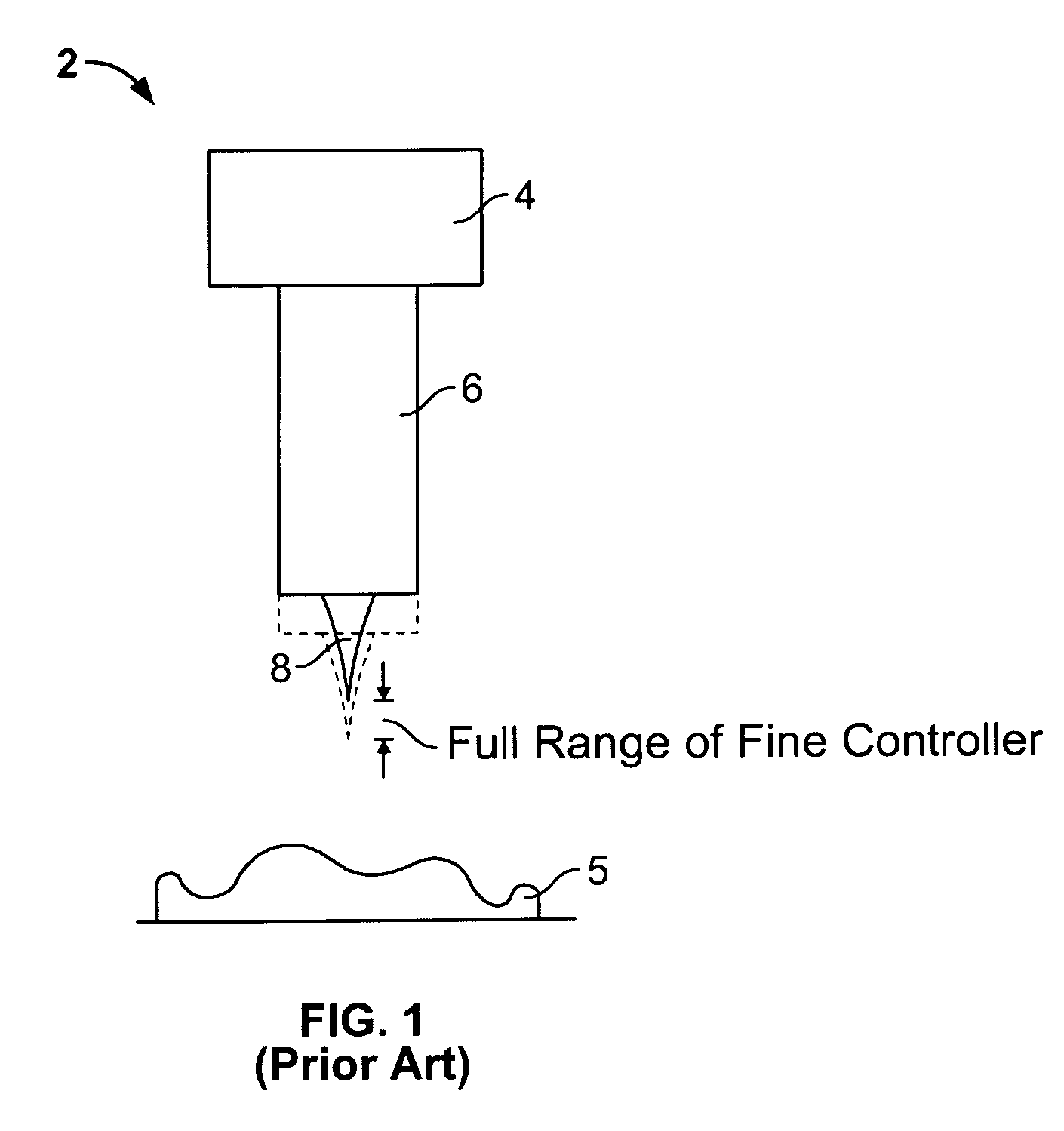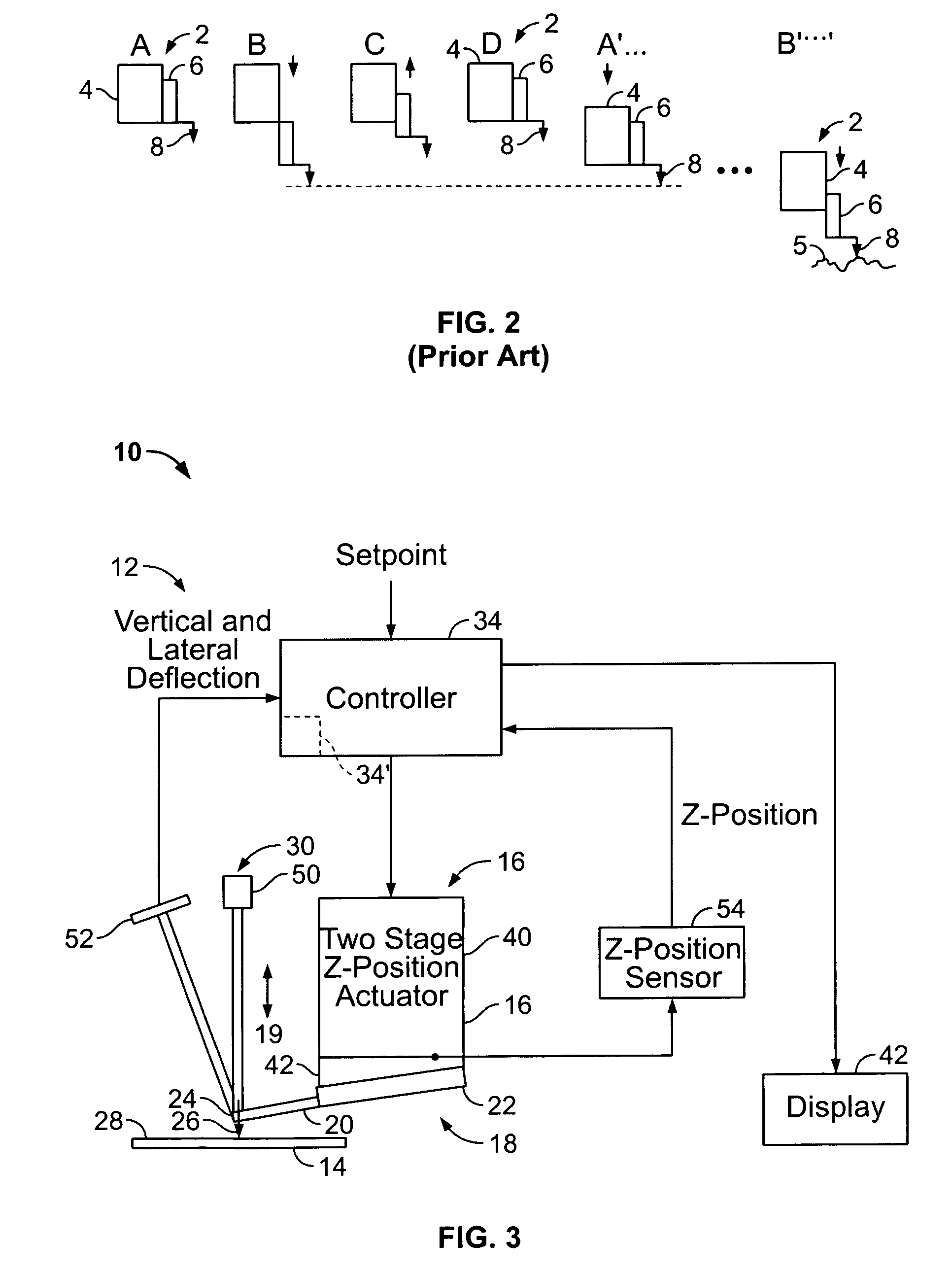Method and apparatus for rapid automatic engagement of a probe
a technology of automatic engagement and probe, applied in the direction of mechanical roughness/irregularity measurement, instruments, measurement devices, etc., can solve the problem of reducing separation and achieve the effect of reducing the engagement time and minimal processing
- Summary
- Abstract
- Description
- Claims
- Application Information
AI Technical Summary
Benefits of technology
Problems solved by technology
Method used
Image
Examples
Embodiment Construction
[0070]The invention as described herein is applicable to virtually any probe based instrument in which the probe / sample spacing must be reduced prior to obtaining sample characteristic measurements. These instruments include SPMs such as AFMs, tunneling force microscopes, and lateral force microscopes. Hence, while the invention will be described primarily in conjunction AFMs by way of example, it is to be understood that it is applicable to many other probe based instruments is well.
[0071]Referring to FIG. 3, a typical AFM 10 has a probe assembly 18 including a probe 19 configured to interact with a sample 14. Probe 19 includes a cantilever 20 having a tip 26 that interacts with sample 14. Probe assembly 18 includes a fixed end or base 22 preferably mounted to an AFM probe holder (not shown), while a free, distal end 24 of cantilever 20 supports tip 26. AFM 10 also includes a feedback loop 12 to control an AFM Z position actuator 16 or simply “Z actuator”.
[0072]In operation, the in...
PUM
 Login to View More
Login to View More Abstract
Description
Claims
Application Information
 Login to View More
Login to View More - R&D
- Intellectual Property
- Life Sciences
- Materials
- Tech Scout
- Unparalleled Data Quality
- Higher Quality Content
- 60% Fewer Hallucinations
Browse by: Latest US Patents, China's latest patents, Technical Efficacy Thesaurus, Application Domain, Technology Topic, Popular Technical Reports.
© 2025 PatSnap. All rights reserved.Legal|Privacy policy|Modern Slavery Act Transparency Statement|Sitemap|About US| Contact US: help@patsnap.com



